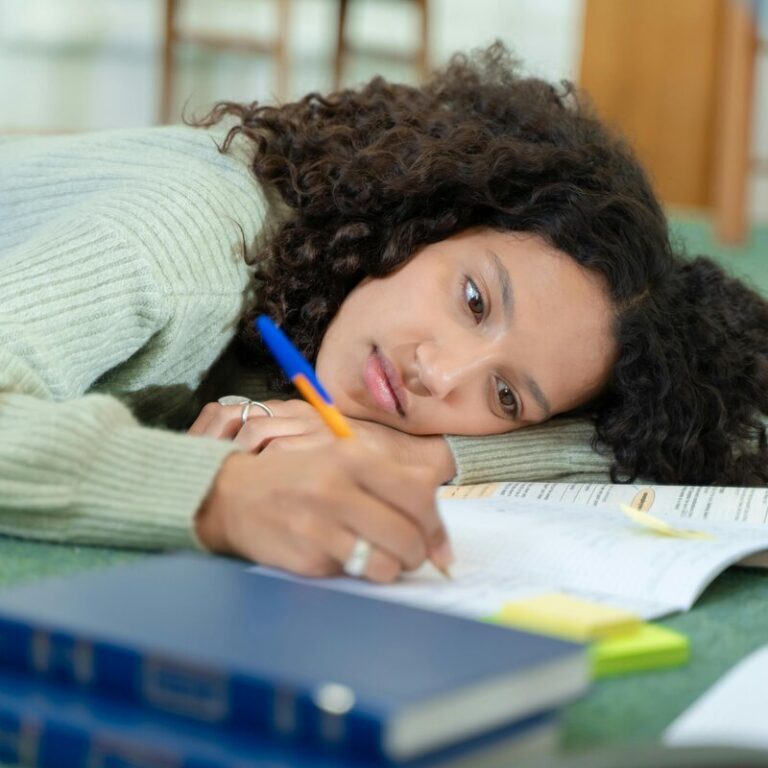Ever wondered why some people choose to reduce anxiety without medication? Anxiety is a defense mechanism meant to keep us safe from harm. But similar to an alarm system, using medication to mask anxiety can be like taking the batteries out of your smoke detector. This solution may end the annoyance of the beeping, but it doesn’t do anything to deal with the actual problem or cause of the alarm going off.
Many of you are familiar with the fight or flight response – the body’s automatic physiological reaction to a danger or threat. In a nutshell, our brain is gearing up our body to survive. One sneaky little problem: the brain can’t differentiate between a real threat and a perceived threat. With anxious thoughts, our automatic, built-in fight or flight response system, soaks itself in stress hormones and the body reacts as it should except for some that fight or flight response works itself into overdrive.
If you think about the brain in terms of mechanics, you can work around the machine and learn to create new wiring. Neuroplasticity is a fascinating topic in the field of neurobiology, which essentially works on the premise that the brain is plastic and, therefore, malleable to reconstruction. Studies on neuroplasticity have proven the brain throughout life can grow, change and alter itself through thoughts, emotions, exercise and experience.
I look at Cognitive-Behavioral Therapy as the fundamentals of neuroplasticity at work. CBT is a brief, directive form of therapy that is based on the theory that our thoughts cause our feelings and, ultimately, our behavior and if we can reframe our thoughts; we can change the way we feel and act in our lives. With that being said, let’s look at five tips that you or somone you love can use to reduce anxiety without medication.
Normalize Thoughts to Reduce Anxiety Without Medication
People, young and old, need to grasp that those intrusive thoughts, the ones you don’t want, are just a regular part of being human. The thing that sets an anxious person apart from a chill one is that someone dealing with anxiety will give meaning to a thought that’s actually meaningless. This mistaken meaning leads to all sorts of anxiety, from mild to severe. An anxious person tends to get stuck on a thought that, in normal times, would just pass through their mind like a train through a station.
Trying hard to stop a thought or shove it away actually makes it stick around longer. A trick therapists often use is thought immersion. It’s like inviting those troublesome thoughts in until they don’t seem threatening anymore. Realizing your brain is like its own thing and that you can take control helps you feel in charge. Knowing you can calmly breathe through any troubling thought makes a big difference. Understanding that a thought isn’t reality (you can silently say it like a mantra) is super useful when you think you’re bad for having those “not-so-great” thoughts. Make those anxiety-causing thoughts normal, normal, normal.
Keep Your Hands Busy
The art of hand movement creates anxiety reduction. Your brain has difficulty with hand movement and other tasks such as worrying. Repetitive, rhythmic hand movement helps pull the brain out of worry mode. Technically, you are forcing your brain to switch gears or at the very least you are “distracting” your brain. Try any activity that engages your hands and your mind. The choices could be endless: knitting, writing, drawing, painting, gardening, or playing basketball. Another helpful one it to take a tupperware container and fill it with rocks or pebbles of some sort. Practice running your hands throught it over and over. The idea is to recognize the anxiety, acknowledge it and then actively engage the brain in another activity.
Exposure Therapy
I am quite sure you have heard of this specific type of Cognitive-Behavioral Therapy but most likely in relation to the fear of spiders and rats. Exposure and Response Prevention, also known as ERP or Exposure Therapy works to “expose” an individual to the feared situation/subject while utilizing calming techniques with a trained professional to desensitize the person. In other words, an anxious child will avoid situations that create anxiety. Exposure therapy helps the child to confront the avoidance behavior and lay new wiring in the brain. It’s easy to forget that a person must learn to fear and, therefore, the same person can unlearn it. It just takes a bit more work.
Exercise, Exercise, Exercise
Not a whole lot to say here. All research and experience points to daily exercise as one of the greatest natural treatments for anxiety reduction and best ways to reduce anxiety without medication. And here’s a little extra perk – you don’t have to be an Olympic athlete! All it takes is a few minutes of giving it your all each day. Some suggest a mere 5-10 minutes will do the trick. Can’t channel your inner Jane Fonda? No worries. A brisk walk gets the job done. It kicks out stress hormones, sparks fresh brain neurons, unleashes those feel-good endorphins, and brings back regular sleep patterns. Need I say more? Well, maybe just one more thing: kick off from where you are and do what you can.
Breathing
Yeah, I know. Genius, right? But breathing has its place in therapeutic healing and there is a reason why it is so effective. It comes down to the automatic response we all have except this time we can utilize it for good. I’ll let Harvard explain: One way to reduce stress and anxiety is “to invoke the relaxation response through a technique first developed in the 1970s at Harvard Medical School by cardiologist Dr. Herbert Benson. The relaxation response is like this Zen state you can get into, and there are different ways to do it, like meditation, yoga, or progressive muscle relaxation. A lot of these techniques use focusing on your breath. So, the first step is getting the hang of deep breathing. If you’re breathing shallow, your diaphragm doesn’t get the full move, and the bottom part of your lungs misses out on good air. That can leave you feeling all out of breath and jittery. No stress if you don’t nail it at first—it takes a bit of practice. If you’re trying this with little ones, get them to practice with a bubble wand, taking slow, long breaths. It makes it easier for them to catch on and adds a bit of fun to the mix
And before You Go…
Before you head off, don’t forget you would do yourself a whole lot of good to include these foods/drinks in your family’s diet to help reduce symptoms of anxiety: Wild Alaskan Salmon, walnuts, ground flax seeds, dark greens, avocado, eggs, turkey, oatmeal, chamomile tea, green tea, small amounts of 70% dark chocolate, and berries. If these foods aren’t a possibility for you, please don’t stress. Just try to eat as many unprocessed foods as you can.
And while you are adding anxiety-reducing foods, go ahead and take away: caffeine, refined sugar, simple carbohydrates, and alcohol – food and drinks known to jack up anxiety.
You do not have to live a life in a state of chronic anxiety. It may take time and it will take hard work. Healing is possible. The body’s natural state of being is good health. You just have to help it along the way.
Want to learn more about small changes you can make to reduce stress and anxiety in a big way? Or looking for more support in finding ways to reduce anxiety without medication? Contact us at hello@awakencounseling.com or reach out to schedule an appointment.



